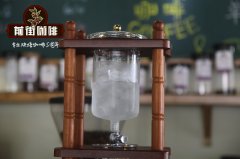Introduction to boutique coffee | Neri Masai Aberdale, Kenya, landscape wash AA Wumei blackcurrant flavor

Professional coffee knowledge exchange more coffee bean information please follow the coffee workshop (Wechat official account cafe_style)
Qianjie-introduction to Marseilles AA in Neri Aberdale, Kenya
Niri, Kenya's most famous coffee-producing region, is located in west-central Kenya, surrounded by mountains of Kenya and Aberdale, and the towering snow-capped mountains can be seen from the Laikipia plain. Surrounded by mountains, the eastern end of the Great Rift Valley of East Africa passes from then on, and the meltwater of the snow-capped mountains brings it pure and cool water. The excellent natural conditions here not only provide habitat for many wild species, but also give birth to the unique flavor of Kenyan coffee. Neri is also a distribution center for Kenyan coffee, tea, sisal, grain and animal husbandry products.
Neri, which was first founded by the British in the early colonial period in 1907, has struggled throughout history, but now it retains magnificent scenery and serenity, with several national parks, game reserves and wildlife reserves located here. Agriculture is an important economic industry in the region, and the thick red volcanic soil is very suitable for growing tea and coffee. The two well-known varieties, SL28 and SL34, highlight their bean advantages here, full and juicy sour and sweet taste, black currant acidity and black plum finish, brown sugar water-like smooth texture, are very classic "Kenyan impression", and this water-washed Marseilles It can be said that the collection of all the classic characteristics of Kenyan water washing items, it is difficult to refuse.
Neri Aberdale, Kenya, landscape wash Marseille AA
Producing area: Neri
Altitude: 1600-2100m
Variety: SL28 SL34
Treatment: exquisite washing treatment
Flavor: White tea, black sugar, plum, blackcurrant
Knowledge expansion: Kenya's coffee producing areas are mainly concentrated in the central region, Mount Kenya, and the main producing areas are Nyeri and Ruiru, etc. This zone is very suitable for the growth of Arabica coffee beans, the main players of fine coffee: Alpine terrain, tropical colder climate; fertile soil acid-base suitable for volcanic ash accumulation.
END
Important Notice :
前街咖啡 FrontStreet Coffee has moved to new addredd:
FrontStreet Coffee Address: 315,Donghua East Road,GuangZhou
Tel:020 38364473
- Prev

Boutique Coffee-introduction to the Flower Flavor of Yepo Fruit washed by Yega Xuefei, Ethiopia
Professional coffee knowledge exchange more coffee bean information please follow the coffee workshop (Wechat official account cafe_style) front street-Ethiopia Yega Sherfield Cochel washing Aper introduction under ECX's production area classification system: Cochel producing area, is one of the four producing areas of Yegashefi (namely Yirgacheffe, Wenago, Gelena Abaya and Kochere). In terms of administrative area
- Next

Panamanian Deborah Manor Coffee drink correctly Panamanian Deborah Manor Coffee is good
Professional coffee knowledge exchange more coffee bean information please follow the coffee workshop (Wechat official account cafe_style) Jamison Savage is an immigrant from the United States who has been building a Finkade Bora base in Panama for the past 10 years. The farm, located 1950 meters above sea level, is one of the highest and most remote farms in Panama. The whole farm depends on the sun
Related
- Beginners will see the "Coffee pull flower" guide!
- What is the difference between ice blog purified milk and ordinary milk coffee?
- Why is the Philippines the largest producer of crops in Liberia?
- For coffee extraction, should the fine powder be retained?
- How does extracted espresso fill pressed powder? How much strength does it take to press the powder?
- How to make jasmine cold extract coffee? Is the jasmine + latte good?
- Will this little toy really make the coffee taste better? How does Lily Drip affect coffee extraction?
- Will the action of slapping the filter cup also affect coffee extraction?
- What's the difference between powder-to-water ratio and powder-to-liquid ratio?
- What is the Ethiopian local species? What does it have to do with Heirloom native species?

